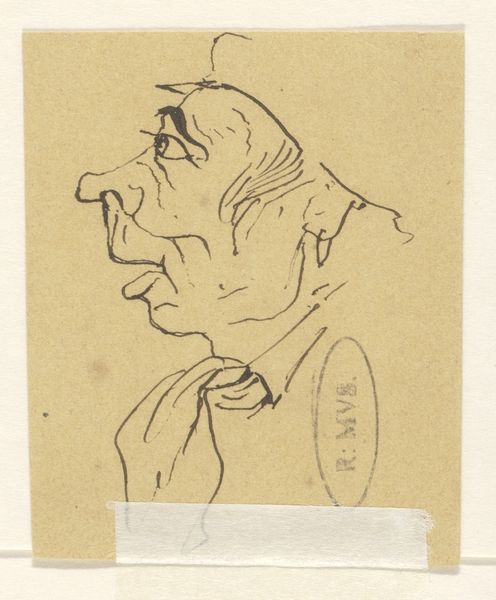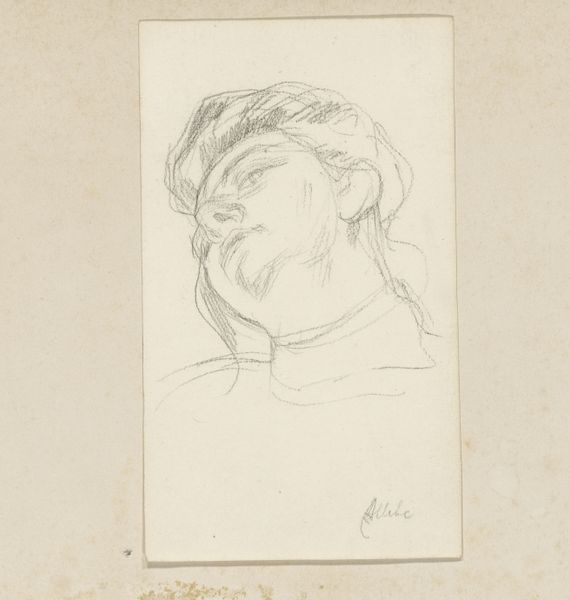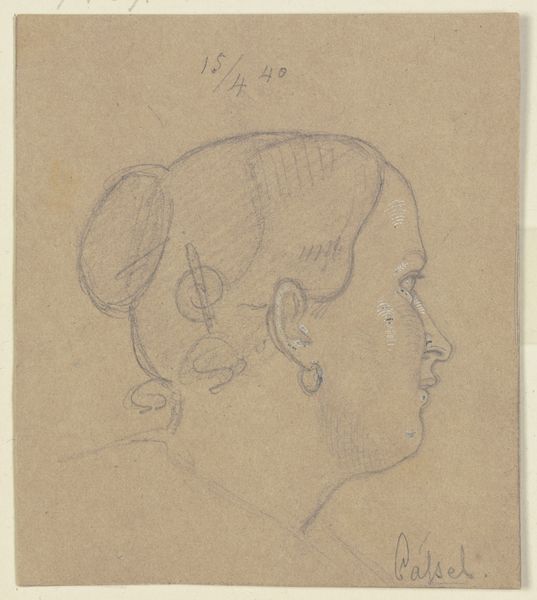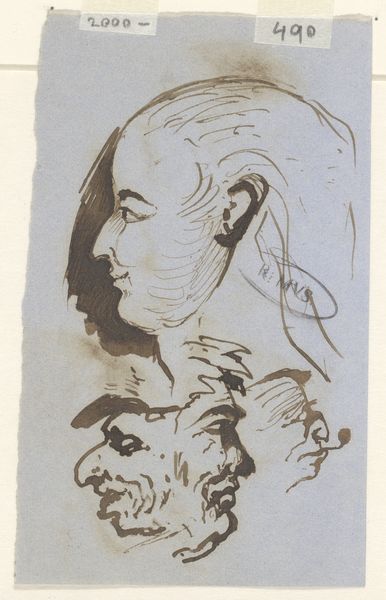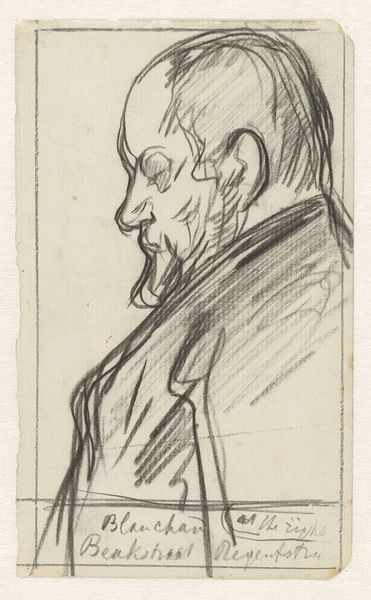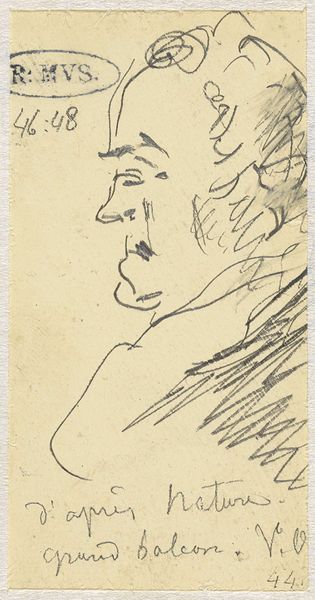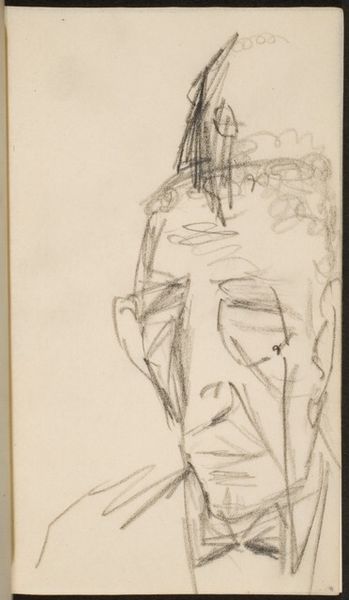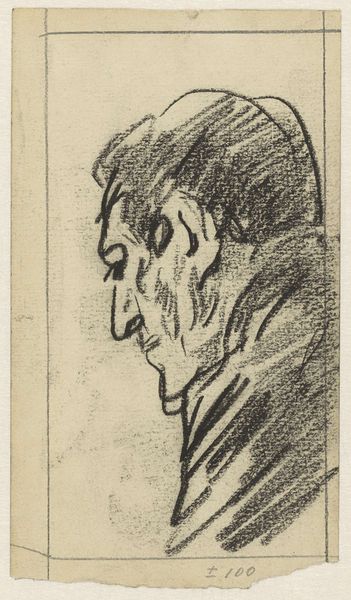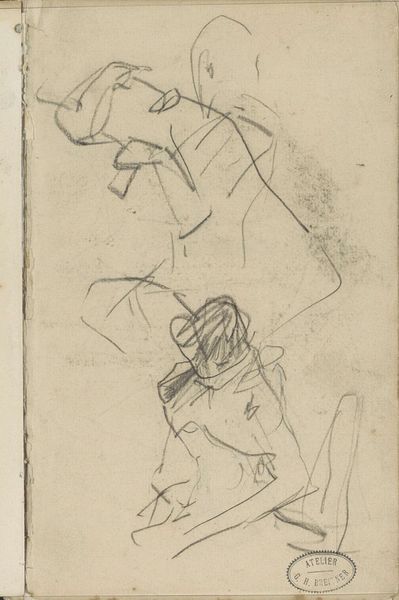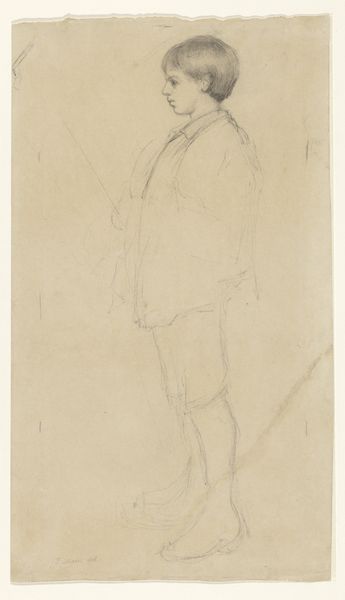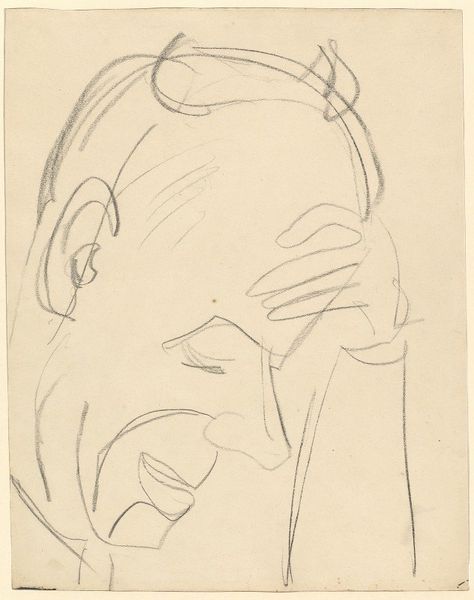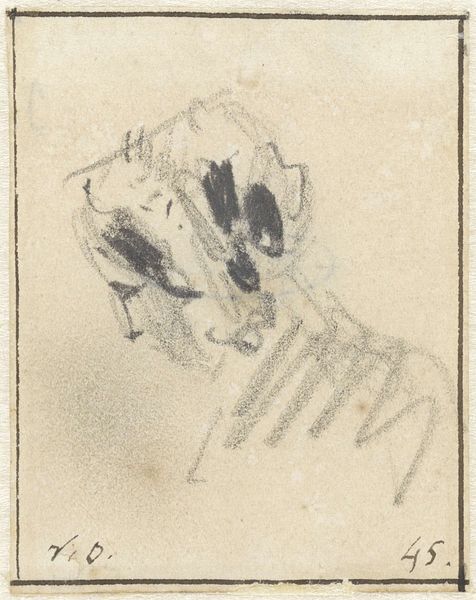
drawing, paper, pencil
#
portrait
#
drawing
#
amateur sketch
#
toned paper
#
light pencil work
#
16_19th-century
#
pencil sketch
#
paper
#
personal sketchbook
#
german
#
pencil drawing
#
pencil
#
sketchbook drawing
#
portrait drawing
#
pencil work
#
sketchbook art
Copyright: Public Domain
Curator: Here we have a quick pencil drawing titled "Portrait of Lüders", housed here at the Städel Museum. Editor: It's wonderfully immediate, isn't it? Raw, almost. It feels like a glimpse into someone's personal sketchbook – not meant for public consumption, but intimate, a study. I love that the toned paper peeks through. Curator: Absolutely. What makes this particular sketch intriguing is its unvarnished quality, precisely as you pointed out. We see the hand of Carl Hoff capturing Lüders's likeness, likely in a spontaneous moment. The medium is key, pencil on paper, conducive to rapid execution and corrections. Editor: And there’s such vulnerability in sketches, they are so open about their making. Look at the light pencil work; it’s like a whisper of a portrait. One could sense Lüders might have simply been in the room with Hoff. The quick hand renders the figure as one encounters him – with the immediacy of simply “being.” It's about catching something fleeting, a moment of presence. I wonder what they were talking about! Curator: The lack of finishing lends to the feeling that this work exists outside of conventional social norms; a candid moment in Hoff’s artistic process is documented here. He captures a sense of the sitter’s physiognomy without the trappings of commissioned portraiture. The lack of a defined date also invites speculation about its specific context, doesn’t it? It might have even been a casual exchange, almost as a gift. Editor: Definitely. The setting of the shoulders, the set of the jaw…There’s a formality suggested beneath the swift, assured mark-making; maybe Hoff thought something of this ‘Lüders,’ saw some potential worth beyond the brief sketch. A subtle undercurrent! It makes you wonder about the dynamics, their social positions, the hidden narratives between artist and subject! What else may Hoff have recorded of Herr Lüders that day? Curator: The institutional implications of housing these "sketchbook" works invites audiences to reflect upon the power of art as both the formal work exhibited in galleries, as well as these less-polished records. Ultimately, Hoff's little portrait presents a window onto not just the person depicted, but also, perhaps more meaningfully, the artist and his context, his thoughts. Editor: And maybe on art's capacity to seize and suspend mere moments; it's all in what catches the eye. Curator: Indeed, something seemingly small ends up revealing broader social, and historical, relationships. Editor: Agreed, making us appreciate what we just viewed even more.
Comments
No comments
Be the first to comment and join the conversation on the ultimate creative platform.
